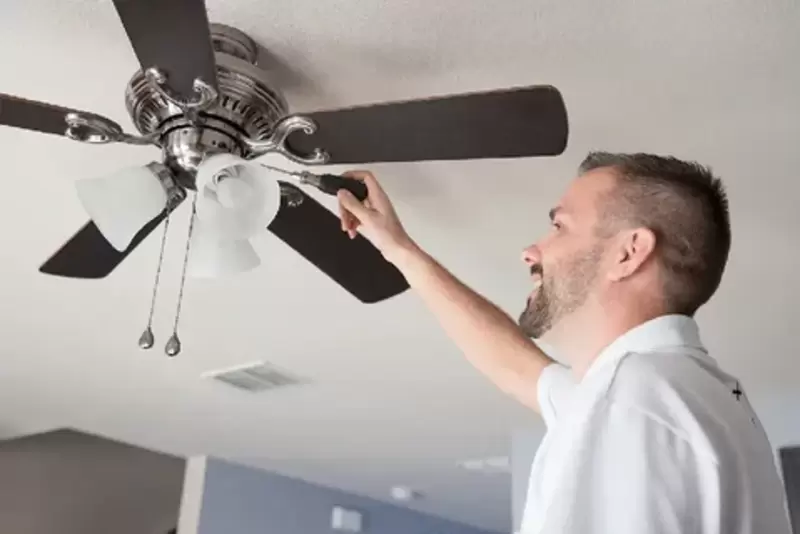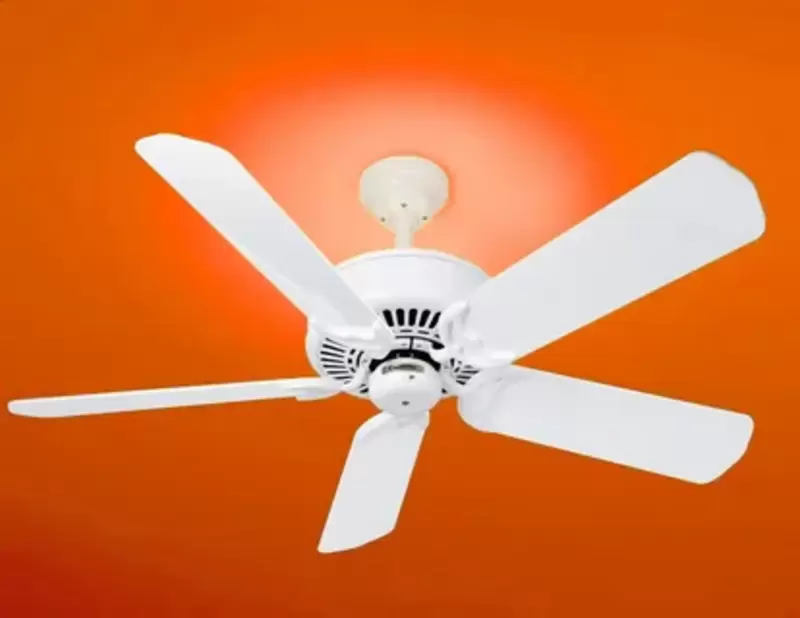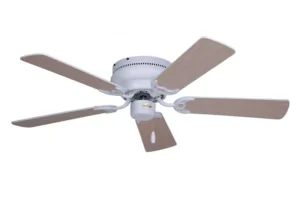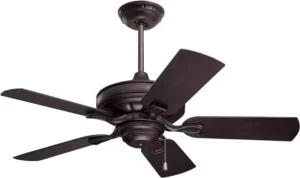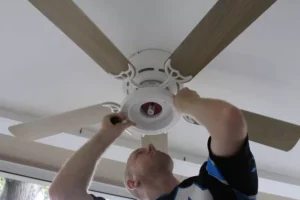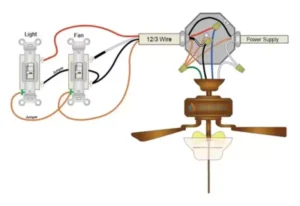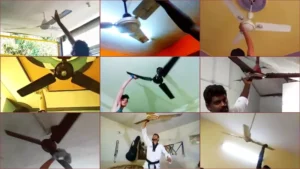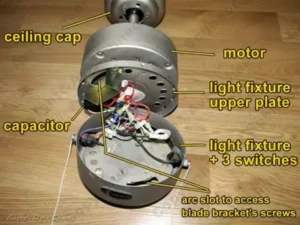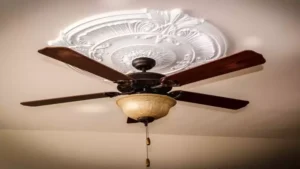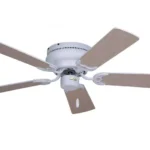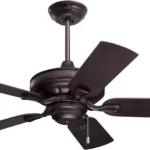How Heat Powered Ceiling Fans Work Their Magic
Introduction
Have you ever walked into a room and felt the gentle breeze of a ceiling fan, even though it wasn’t connected to any electrical source? That’s the magic of heat powered ceiling fans – ingenious devices that harness the power of natural convection currents to provide energy-efficient cooling. Unlike traditional electric fans, these innovative systems require no electrical connections, making them an eco-friendly and cost-effective solution for ventilation. In this comprehensive guide, we’ll explore the fascinating science behind how heat powered ceiling fans operate and the advantages they offer.
The Principle of Natural Convection
To grasp how heat powered ceiling fans work, we must first understand the concept of natural convection. This phenomenon occurs when a temperature difference within a fluid (gas or liquid) causes density variations, resulting in the fluid’s motion driven by buoyancy forces. Essentially, warmer portions of the fluid become less dense and rise, while cooler, denser portions sink, creating a continuous circular flow.
What Causes Natural Convection Currents?
Natural convection currents are primarily driven by three factors:
- Temperature Differences: When there is a temperature gradient within a fluid, the warmer regions become less dense, causing them to rise, while the cooler, denser regions sink.
- Density Variations: As the temperature of a fluid changes, its density also varies. This density difference is the driving force behind the motion of the fluid.
- Buoyancy Forces: The upward buoyant force acting on the warmer, less dense portions of the fluid, combined with the downward force of gravity on the cooler, denser portions, creates the convection currents.
A simple example of natural convection is the way air circulates in a room. As the air near a heat source (e.g., a radiator or a window exposed to sunlight) warms up, it becomes less dense and rises, creating an upward flow. Simultaneously, the cooler, denser air sinks, resulting in a continuous circular pattern of air movement.
Anatomy of a Heat Powered Ceiling Fan
These innovative fans consist of several key components that work together to harness natural convection currents. Let’s break them down:
The Heat Source
At the heart of a heat powered ceiling fan is a sealed metal cylinder or chamber filled with a heat-transfer fluid, typically distilled water. This chamber is designed to absorb heat from the surrounding air or a secondary heat source, such as an incandescent light bulb or a solar heating system.
As the heat-transfer fluid inside the chamber warms up, it expands and becomes less dense, causing it to rise due to buoyancy forces.
The Turbine Blades
Mounted on a vertical shaft are strategically angled turbine blades. These blades are carefully designed to catch and amplify the rising convection currents generated by the heat source.
As the hot air rises, it causes the turbine blades to spin, providing rotational motion that drives the fan blades attached to the same shaft.
The Cooling Fins (Optional)
Some heat powered ceiling fans incorporate cooling fins or vanes around the heat source chamber. These metal fins increase the surface area available for heat dissipation, helping to maintain the temperature differential between the heat source and the surrounding air.
By efficiently dissipating excess heat, the cooling fins ensure that the temperature gradient necessary for continuous operation is maintained.
How Heat Powered Ceiling Fans Operate: Step-by-Step
Now that we understand the key components, let’s break down the step-by-step process of how heat powered ceiling fans operate:
- Heat Absorption: The heat source, typically a sealed metal cylinder or chamber filled with a heat-transfer fluid (e.g., distilled water), absorbs thermal energy from the surrounding air or a secondary heat source, such as an incandescent light bulb or a solar heating system.
- Fluid Expansion and Buoyancy: As the heat-transfer fluid inside the sealed chamber warms up, it expands and becomes less dense. Due to the buoyancy forces, this warmer, less dense fluid rises within the chamber.
- Convection Current Generation: The rising hot fluid creates a low-pressure area near the bottom of the chamber, drawing in cooler, denser air from the surroundings. This continuous cycle of rising hot air and descending cooler air generates a natural convection current.
- Turbine Blade Rotation: The angled turbine blades mounted on the vertical shaft are strategically positioned to catch and amplify this convection current. As the rising hot air strikes the turbine blades, it causes the shaft to spin, transferring the rotational motion to the fan blades.
- Air Circulation: The spinning fan blades create a cooling breeze, circulating the air in the room or surrounding area. This air movement helps distribute the cooler air and enhance overall comfort levels.
- Heat Dissipation (Optional): In some designs, cooling fins or vanes around the heat source chamber help dissipate excess heat, maintaining the temperature differential necessary for sustained operation. By efficiently dissipating heat, the cooling fins ensure that the convection current continues to drive the fan’s rotation.
This continuous cycle of heat absorption, convection current generation, and turbine blade rotation allows heat powered ceiling fans to provide energy-efficient cooling without the need for any electrical connections or external power sources.
Advantages of Heat Powered Ceiling Fans
Heat powered ceiling fans offer several compelling advantages over traditional electric fans, making them an attractive choice for various applications:
- Zero Electricity Consumption: One of the most significant advantages of heat powered ceiling fans is their ability to operate without any electricity. This not only reduces energy costs but also makes them an environmentally friendly and sustainable solution.
- Low Maintenance: With no motors, electrical components, or complex mechanisms, heat powered ceiling fans require minimal maintenance. They operate silently and are free from the humming or buzzing noises associated with electric fans.
- Suitable for Remote Locations: These fans are ideal for spaces without electrical wiring, such as patios, gazebos, or outdoor living areas. They can provide cooling in areas where running electrical lines may be impractical or costly.
- Potential for Integration with Solar Heating Systems: Some designs allow for the integration of solar heating systems, further enhancing their eco-friendly credentials. By harnessing solar energy to power the heat source, these fans can operate entirely off-grid.
- Quiet Operation: Unlike electric fans, heat powered ceiling fans operate silently, creating a peaceful and serene environment without the distracting noise of motors or blades.
Limitations and Considerations
While heat powered ceiling fans offer numerous advantages, it’s important to consider their limitations and potential drawbacks:
– Lower Airflow Compared to Electric Fans: Due to their reliance on natural convection currents, heat powered ceiling fans may not generate as much airflow as their electric counterparts, especially in larger spaces or areas with high ceilings.
– Dependence on Temperature Differentials: For optimal performance, heat powered ceiling fans require a consistent temperature differential between the heat source and the surrounding air. In environments with minimal temperature variations, their efficiency may be reduced.
– Initial Installation Costs: While operating costs are low, the initial installation of a heat powered ceiling fan system can be more expensive compared to traditional electric fans, especially if integrating solar heating components.
– Limited Control Options: Most heat powered ceiling fans lack advanced control features, such as variable speed settings or remote operation, which are commonly found in electric fans.
It’s important to carefully evaluate your specific needs and environmental conditions to determine if a heat powered ceiling fan is the right solution for your space.
Conclusion
Heat powered ceiling fans are a remarkable example of how simple physics principles can be harnessed to create efficient and sustainable cooling solutions. By understanding the science behind natural convection currents and the ingenious design of these fans, we can appreciate the elegance of this eco-friendly technology.
As we strive for more energy-efficient living, heat powered ceiling fans offer a compelling alternative to traditional electric fans, providing comfort while minimizing our environmental impact. Whether for residential or commercial applications, these innovative systems are worth considering as part of a comprehensive strategy for reducing energy consumption and promoting sustainable practices.
Remember, when considering heat powered ceiling fans, it’s essential to evaluate factors such as airflow requirements, temperature variations, installation costs, and control preferences to ensure they meet your specific needs. By embracing innovative solutions like these,
